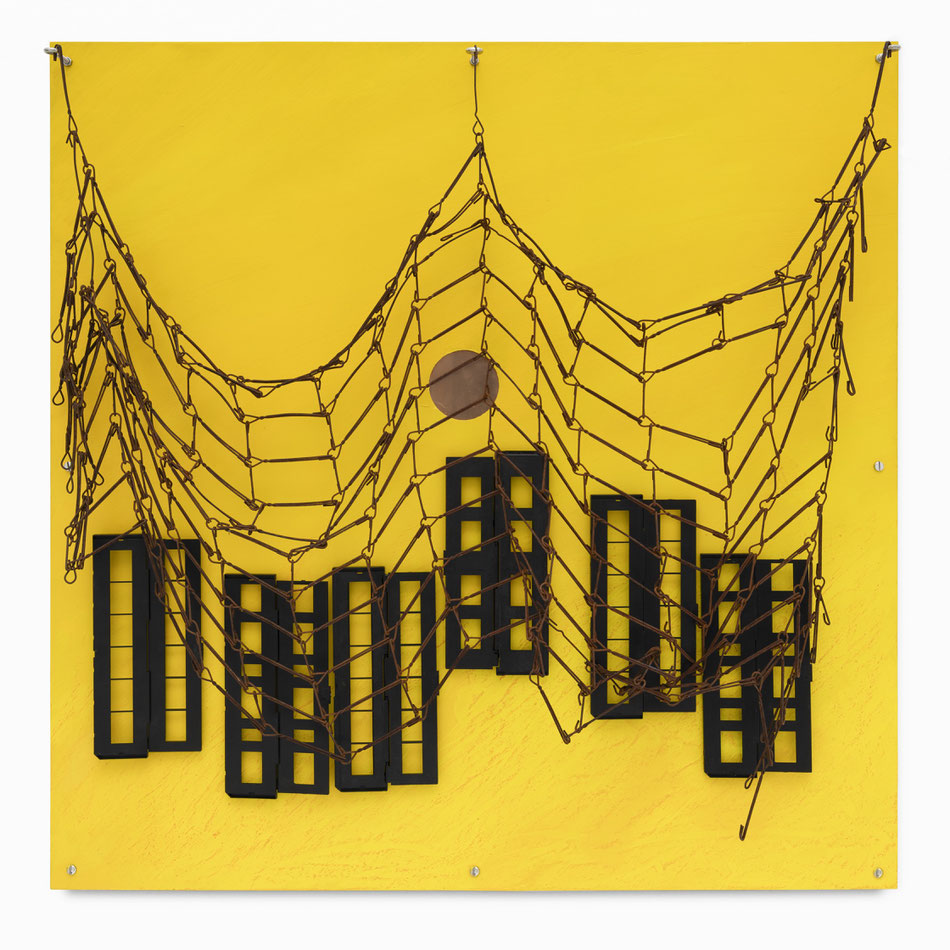

_Enter The Forbidden City
solo show at Lusvardi Art, Milan 2024
EN
“Enter The Forbidden City” is a reference to the Forbidden City in Beijing. A city within a city, forbidden to the public for centuries. When the Forbidden City opened its doors it turned into a museum. A total work of art kept secret was now on display to the public.
The exhibition at Lusvardi Art can be seen as the artist's city within the city. A set of works grown in the artist's studio in Berlin-Neukölln is now set up as an environment accessible to the public. A city you are invited to enter.
But why the metaphor of a city? The artist asks himself: what is a city in our memory? The answer could be: we remember the city as a feeling linked to brief events frozen in static images that move before our inner eye.
It is an atmosphere that engages all the senses and if we magnify this imagination, we could see individual objects. The idea of capturing the spirit of a city in static images is based on this concept of memory.
In 2023 Alessandro Rauschmann found 20 square aluminum plates of equal dimensions and began working on them, 13 of these plates are now exhibited at Lusvardi Art together with 3 Mobiles and a group of sculptures connected to this body of work.
The plates have 8 screws in common, reminding us of their first "life" as commercial displays. These screws can functionally serve the painting to fix three-dimensional objects, creating a second layer of image. This overlap of objects and painting is linked to the artist's vision of the city: a composition of shapes and silhouettes that overlap in front of an abstract color field.
The objects that the artist finds in his travels through various cities, but especially along the way to his studio, act as remnants of urban life, losing their function, coming together to express their aesthetic and symbolic quality. Like the books that are placed on the streets often with a sign inviting people to take them instead of being thrown away directly. These books appear in the assemblages both as ready-to-use colors and as a subject.
Similarly, the assembly method can also be understood in terms of content: In the painting "DOOM DRUMMER", which originates from the cover of one of the many books found on the street by Günther Grass, whose cover features a drawing made by the same author who depicts a tin drum which refers to the title of the same name, the image of the drum is projected onto the surface of the painting, but its execution with marker and spray can and the writing DOOM, referring to the logo of a cult computer game they open up to an aesthetic renewal through which the image finds a renewed dialogue with the contemporary.
In fact, the artist reports how the tin drummer can prophesy destiny, warning us once again of the current threat represented by fascism.
The work "PSYCHOSIS" is fundamental to understand the connection that the artist presents for objects, in fact he says:
"I understand objects and themes equally as discoveries and not as the result of research. I found the crowbar on the bank of the canal on the way to my studio. Someone had thrown it into the canal for no reason and someone else threw it fished with a magnet and left the unwanted treasure. When I tie it to my painting, the crowbar breaks through the thin film of oil like a disturbing thought.”















































